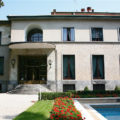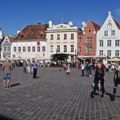ITALIAN Wine by Design
Jane Adams explores the modern architecture of Italy’s top wineries.
Italian design is legendary – in fashion, cars, bikes, furniture and household goods. Just think Armani, Fendi, Ferragamo; Ferrari, Maserati, Pinarello, Alessi, Ilve and Bormioli. These brands spring easily to mind, as do food and drink market leaders like Aperol, Barilla and Lavazza. Italians lead the way in myriad design fields – and interestingly, winery architecture.
By all means seek out your favorite Super Tuscans, Barolos and Proseccos when in bella Italia, but spread your wings beyond the local enoteca and consider treating yourself to explorations of contemporary Italian winery architecture. Instead of touring Andrea Palladio’s villas and Bernini’s baroque edifices, set your radar for some spectacular cellar doors, where grandiosity and cherubs have been supplanted by selfie-assured modernism. You won’t be disappointed.
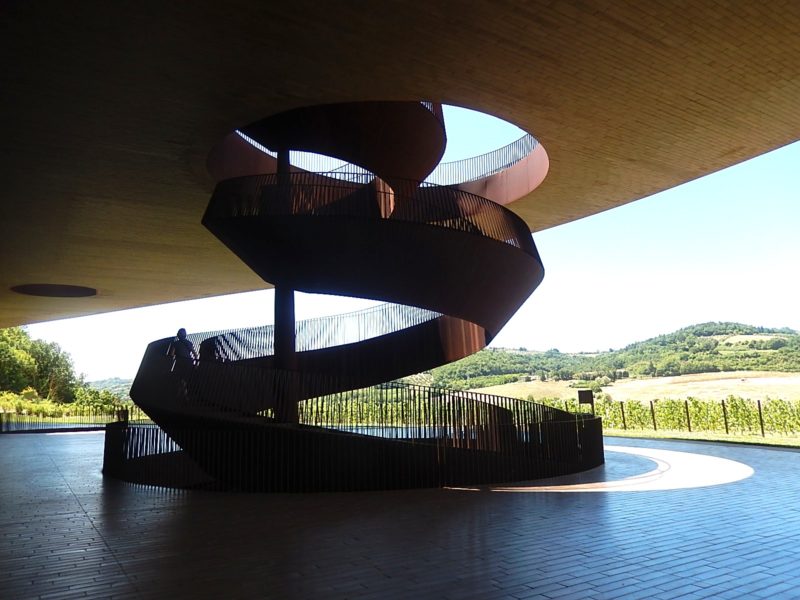
Antinori spiral stair | Photo: Jane Adams
The Antinori family’s Tuscan cathedral rises alongside the Florence-Siena autostrada, the not-to-be missed hub of this icon wine company, which can be traced back to 1385 and is now run by Marquis Piero Antinori and his three daughters. Designed by Archea Associati, the mostly underground structure cannily celebrates the notion ‘Super-Tuscan’ without dominating the surrounding Chianti hills. Recessed into the contours of the hillside, the gravity-fed winery is built from terracotta, timber and weathered steel to reflect the region’s terroir. A striking spiral staircase leads to the ‘roof’ – a vineyard and vegetable garden, overlooked by Rinuccio 1180, the relaxed winery bistro dedicated to one of the family forebears. Take the winery tour, then soak up the Antinori heritage and grand vision over an al fresco classic Chianina beef tagliata and a bottle of sangiovese!
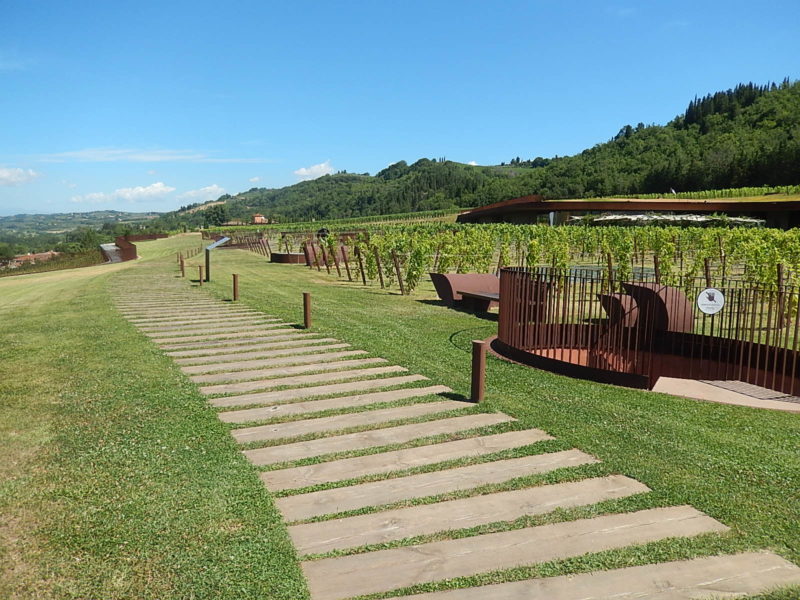
Antinori rooftop vineyard | Photo: Jane Adams
Once upon a time the local co-operative cantina was the place to go for large format bottles of gluggable red or white. But not any more at Cantina Tramin the growers’ co-op in Termeno in the Alto Adige (north of Verona), the region where in 1000 the aromatic white variety, gewürztraminer is said to have originated. It’s the mainstay grape of the Cantina Tramin portfolio and the inspiration for Bolzano architect Tscholl Werner’s striking tendril green, climbing vine enveloped glass box with wide valley vistas. Unlike many other Italian wineries, the Cantina tasting room is open most days without an appointment.
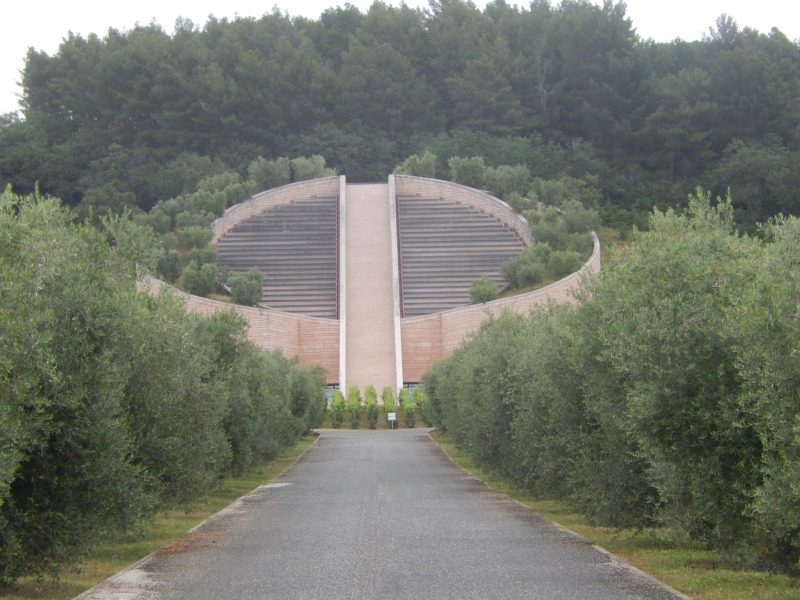
Petra entrance | Photo: Jane Adams
There is no denouncing the imposing terracotta stone cylindrical structure that is Petra winery a 60-million euro investment by the Moretti family (also producers of Bellavista Franciacorta sparkling wine) in Suvereto in the lesser-known Maremma region abutting the Tuscan coast and Tyrrhenian Sea, with views of Elba. Recessed into the hillside, the enormous brick structure designed by Mario Botta channels both perpetuity and purpose, a gravity-fed winery dedicated to the production of ‘Super Tuscan’ red wines. Most of the building is underground with production and schmick- modern cellar spaces that draw audible gasps from surprised visitors. Soaring ceilings, clever natural light capture, and kaleidoscopic light shows in the barrel hall all combine to embed this homage to the grape in the once Etruscan landscape. Tours and tastings are available daily, and can include an immensely satisfying four-course lunch featuring Petra farm salumi and other produce, with matching wines.
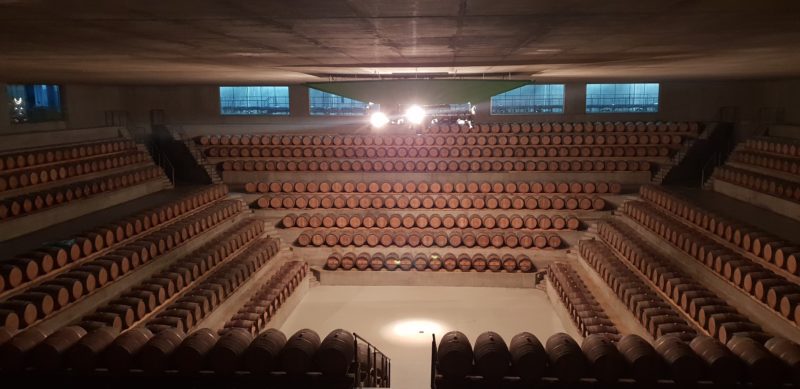
Rocca di Frassinello barrel hall | Photo: Jane Adams
Take the bumpy farm road and just keep on driving till you spot the slender bright terracotta red tower, the icon that signposts Renzo di Piano’s contribution to Italian winery architecture, also in the Tuscan Maremma district along the historic Aurelia Roman road. Di Piano who has the Paris Pompidou Centre, London’s Shard and the Whitney Museum, New York on his global resume has dramatically configured a primarily underground winery around a central 1000-barrel cellar that sometimes doubles as a recital space. The visible building is a cantilevered flat-roofed spindly metal-framed glass box that sits atop a terracotta-tiled platform where during vintage trucks roll up to deliver grapes down shutes into presses and tanks below. Again the dominant color coding is bright vine green and terracotta, echoing the landscape, olive trees, 90 hectares of vines and the nearby Etruscan archaeological site, San Germano. Be sure to book a tasting that includes the flagship Baffonero, (100% merlot) from the vineyard block just down the hill, the legacy of this impressive collaborative venture of Castellare di Chianti and Domaines Baron de Rothschild-Lafite.
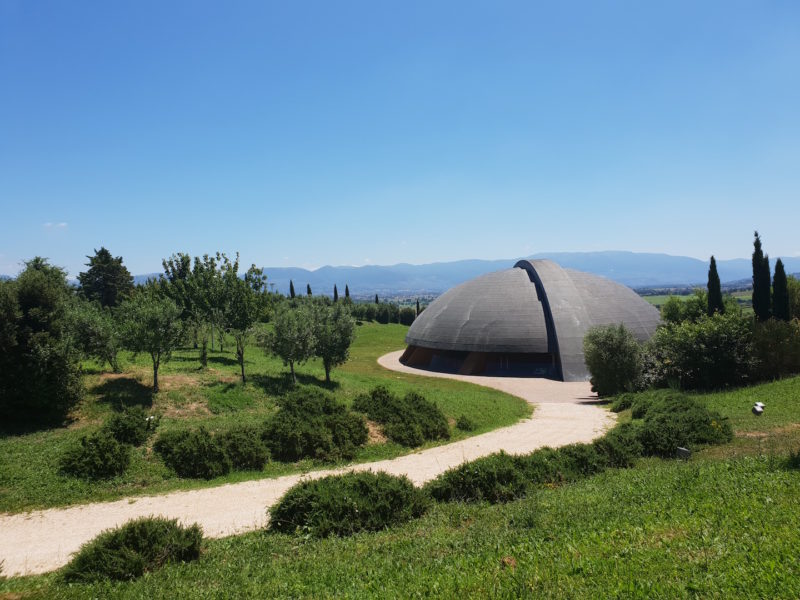
Castelbuono landscape | Photo: Jane Adams
Not to be over-shadowed by Tuscany, Umbria also boasts a go-to winery, Tenuta Castelbuono, the creation of the Lunelli family of Ferrari sparkling wine fame who commissioned maestro artist Arnaldo Pomodoro and architect Giorgio Pedrotti to conceive a monument for their Umbrian estates. He called it ‘Carapace’ a fissured copper covered dome that sits atop a hill marked by a ‘can’t miss it’ giant red dart. The curvaceous copper exterior is inspired by the shell of a tortoise providing a protective ‘lid’ for the dramatically vaulted tasting room. Below is another underground winery, accessed by a spiral ramp leading to the circular barrel hall and inner sanctum display of the Tenuta’s flagship wines. It took six years to build what Pomodoro considers to be a living sculpture with wide-eyed views over rolling Umbrian vine-covered hills. Sip the intense full-bodied Carapace Sagrantino slowly to fully absorb the artist’s contemplative unhurried intent.
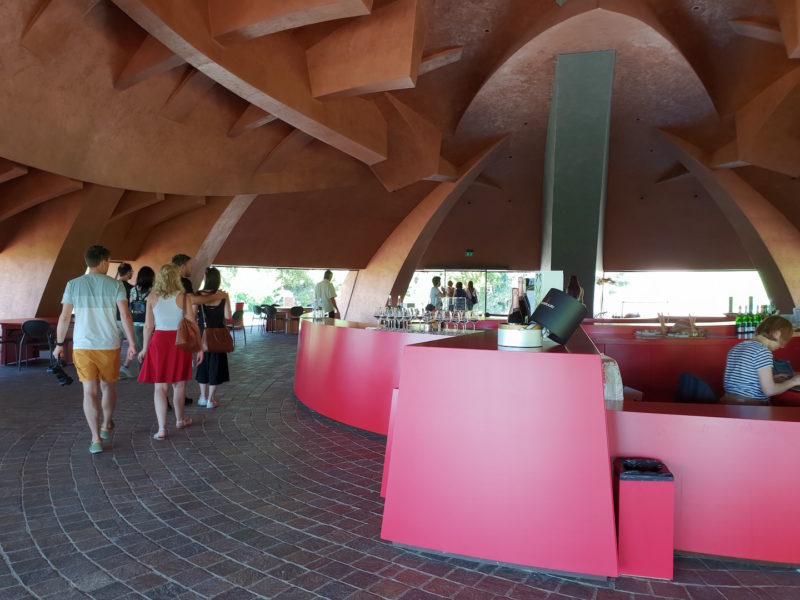
Castelbuono tasting room | Photo: Jane Adams
RECOMMENDED READING
Navigations aids recommended to augment an Italian winery architecture tour:
- Slow Italian Wine Guide 2017
- Gambero Rosso Italian Wines 2018
- Wines of Italy – Burton Anderson
Jane Adams
Latest posts by Jane Adams
- Putting on the RAJ - April 27, 2019
- OMAN- Not a Thousand and One Nights - March 13, 2019
- JAIPUR or Bust! - February 22, 2019


